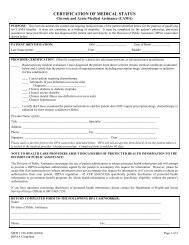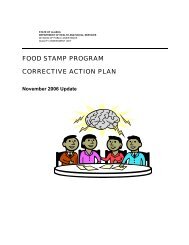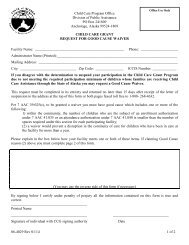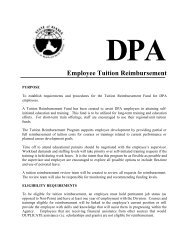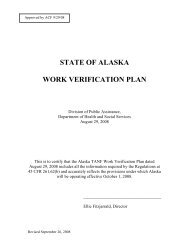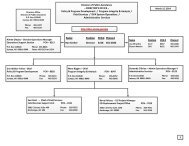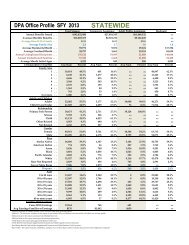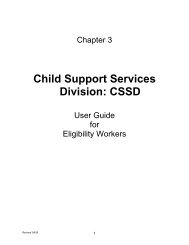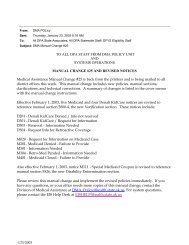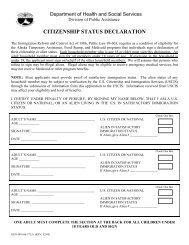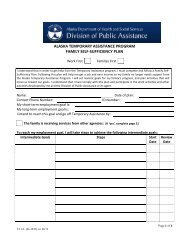Native Family Assistance Program Guide - DPAweb - Alaska ...
Native Family Assistance Program Guide - DPAweb - Alaska ...
Native Family Assistance Program Guide - DPAweb - Alaska ...
Create successful ePaper yourself
Turn your PDF publications into a flip-book with our unique Google optimized e-Paper software.
Information ExchangeThe grant agreements between the State of <strong>Alaska</strong> DHSS and <strong>Native</strong> Organizationsoperating <strong>Native</strong> <strong>Family</strong> <strong>Assistance</strong> <strong>Program</strong>s (NFAPs) contain specific languageregarding service coordination and exchange of information. A signed release ofinformation form is not needed to share information with NFAP employees about mutualclients. CITCI uses DPA’s Eligibility Information System (EIS) to determine eligibilityand authorize cash assistance. AVCP, TCC, T&H, BBNA, KANA and Maniilaq haveread-only access to EIS. Like DPA staff, NFAP staff must read DPA’s Security Manual,complete security agreements, agree to safeguard client information, comply with Stateof <strong>Alaska</strong> laws and regulations governing the confidentiality and use and disclosure ofpublic assistance records, and are subject to the penalties associated with misuse ofinformation.NFAPs negotiate and secure separate data exchange and memoranda of agreementswith the Department of Labor and Workforce Development, Permanent Fund DividendDivision, and the Social Security Administration, permitting information exchange anduse of interfaces.Joint Case ProcessingSpecial instructions for NFAP and DPA case processing procedures are located in theAdministrative Procedures Manual section 116.http://dpaweb.hss.state.ak.us/manuals/admin/apm.htm The section includes informationon accepting and processing applications, change reporting, transferring cases, andother processes pertinent to the exchange of information and data between the NFAPsand DPA which affects other assistance programs such as Food Stamps and Medicaid.The collaboration and coordination between DPA and the NFAPs is critical to providingassistance to all <strong>Alaska</strong>ns in need. It is important to keep open lines of communicationto maximize client service, administrative efficiency, and ensure timeliness andaccuracy of eligibility and payment determinations.Special CircumstancesA family who is eligible to be served by a <strong>Native</strong> <strong>Family</strong> <strong>Assistance</strong> <strong>Program</strong> mayrequest to be served by ATAP, when the family demonstrates “special circumstances”exist. “Special circumstances” may exist when an individual chooses not to claim atribal affiliation, and has not previously received tribal services. Please see TA MS 710-4 A. for more information on Special Circumstances, or e-mail the Policy & <strong>Program</strong>Development Team at DPAPOLICY@alaska.gov.Note: The <strong>Alaska</strong> <strong>Native</strong> <strong>Family</strong> <strong>Assistance</strong> <strong>Program</strong>s have great flexibility underfederal and state law to establish the eligibility requirements for their programs. Thesemay differ from those provided under the State's <strong>Alaska</strong> Temporary <strong>Assistance</strong>15<strong>Native</strong> <strong>Family</strong> <strong>Assistance</strong> <strong>Program</strong> <strong>Guide</strong> Revised 12/11/12



